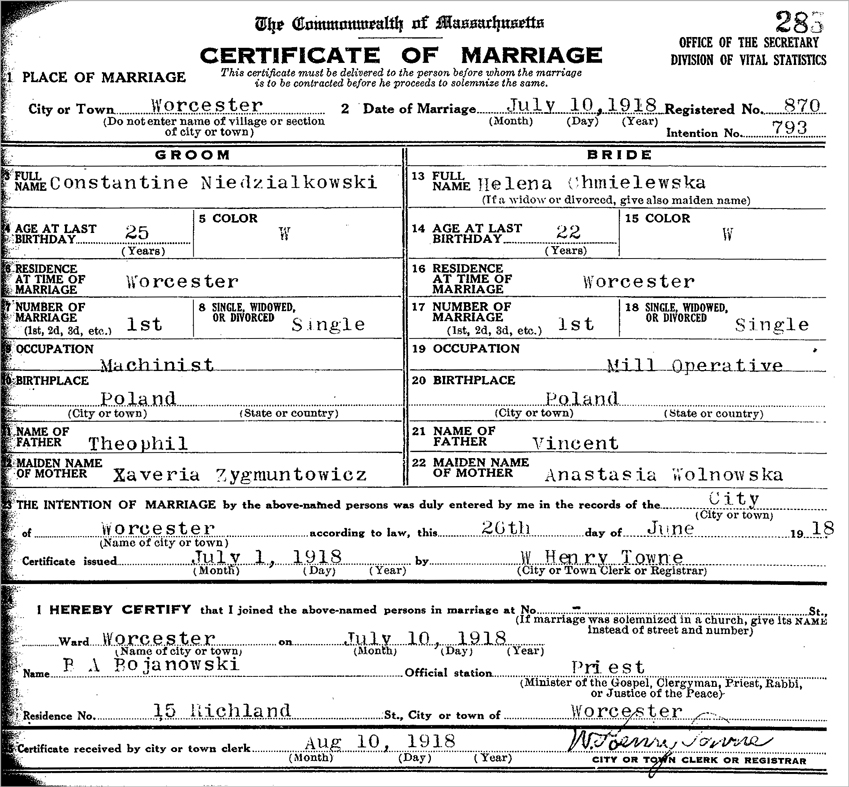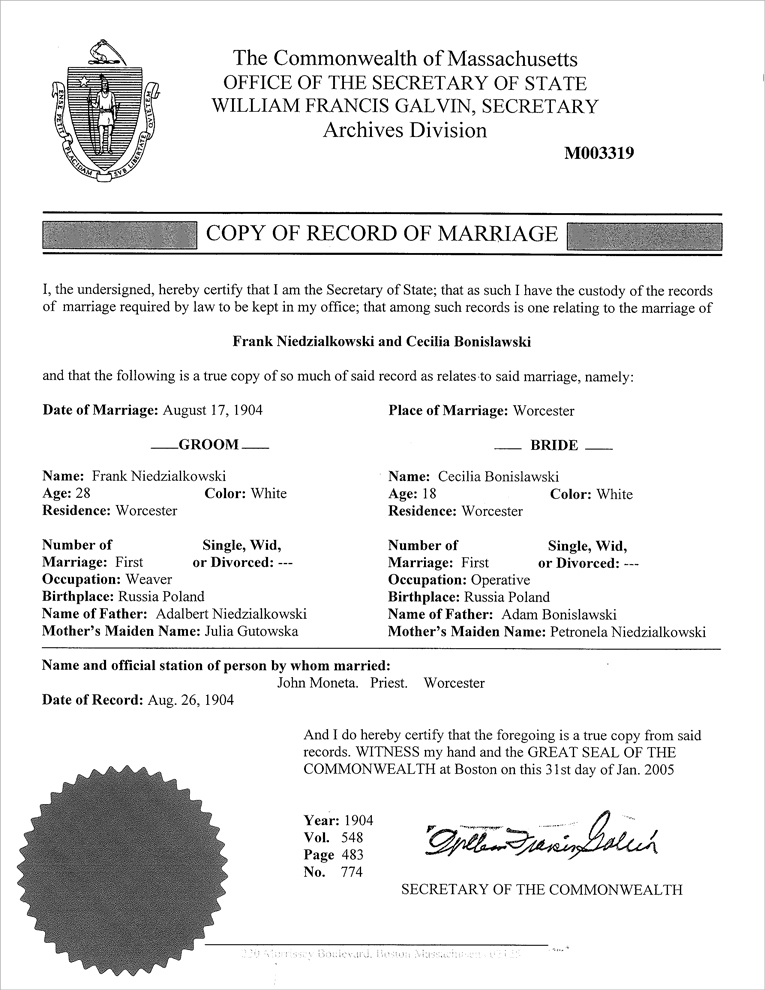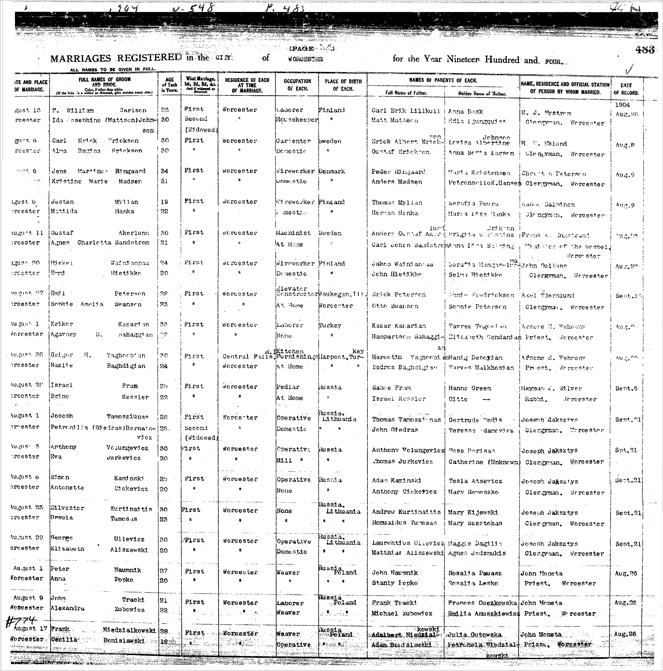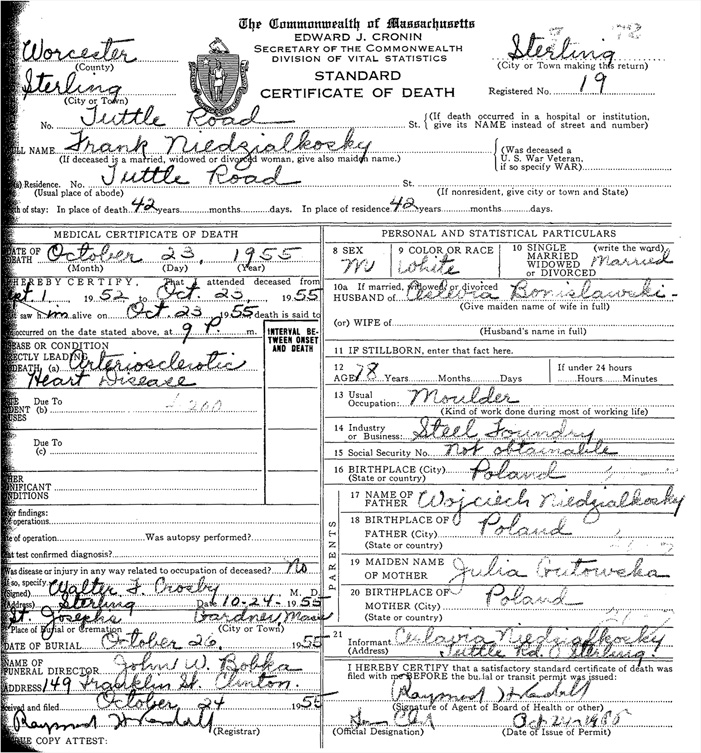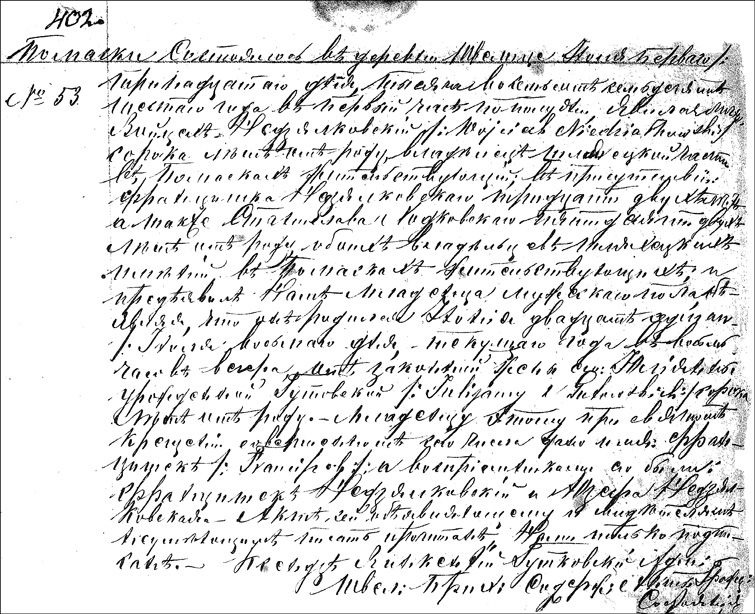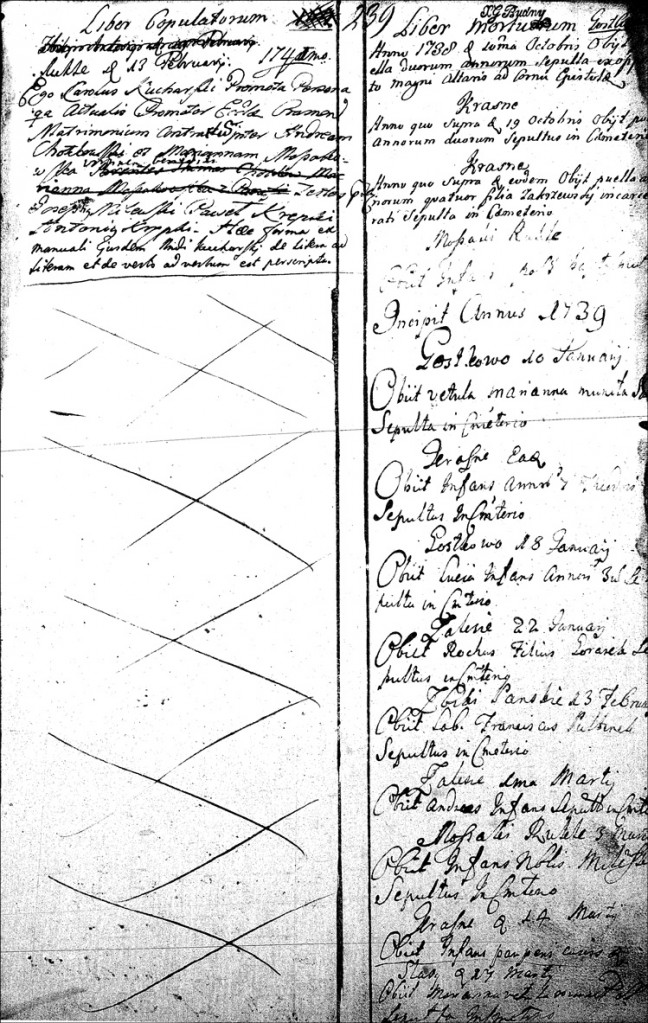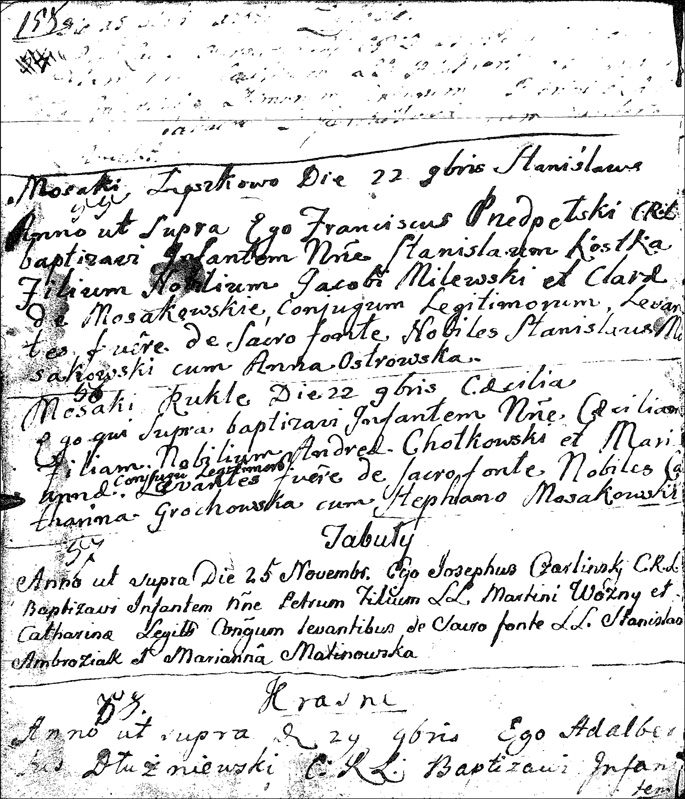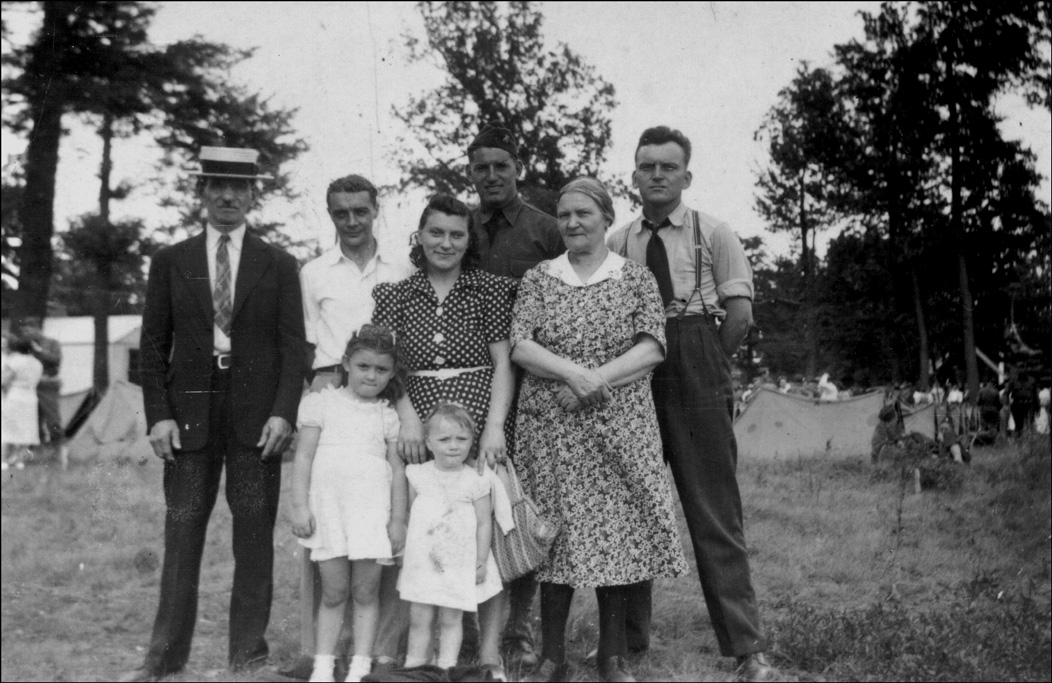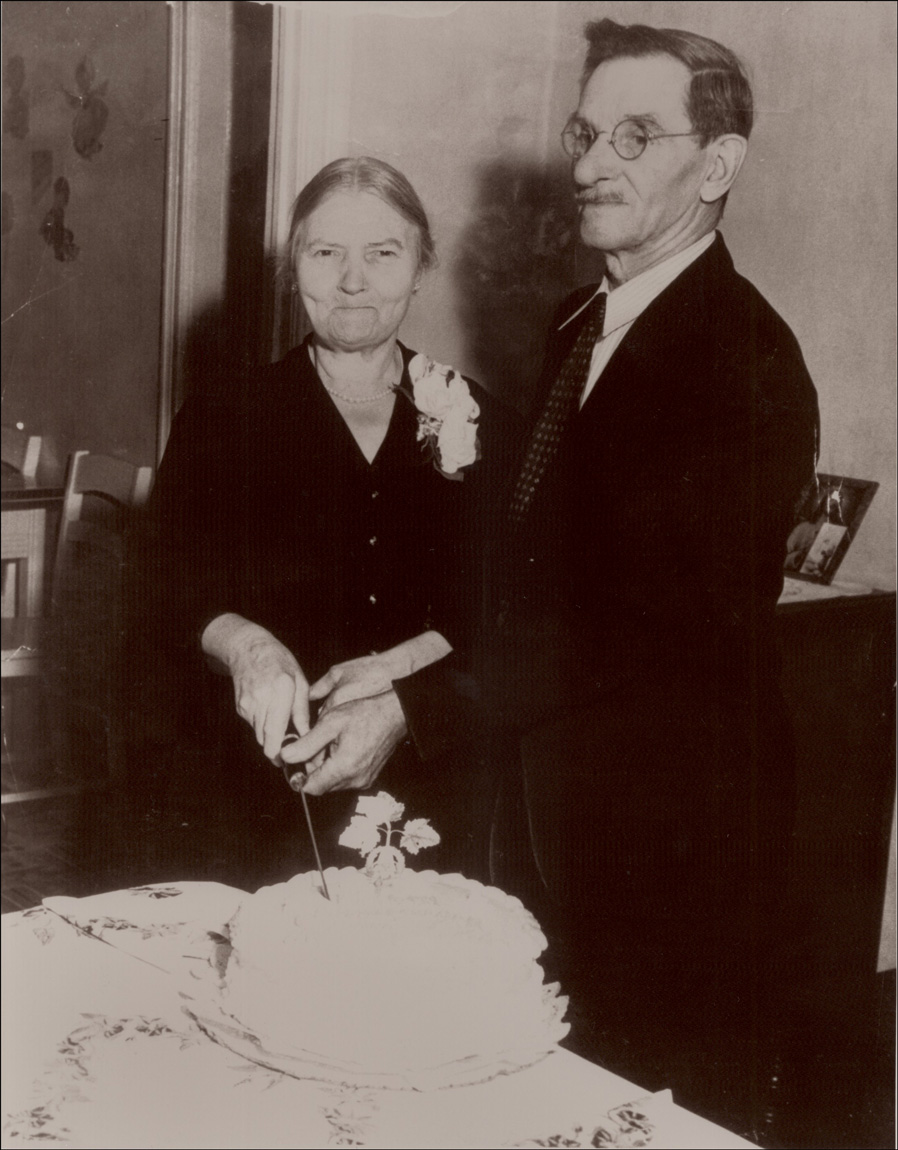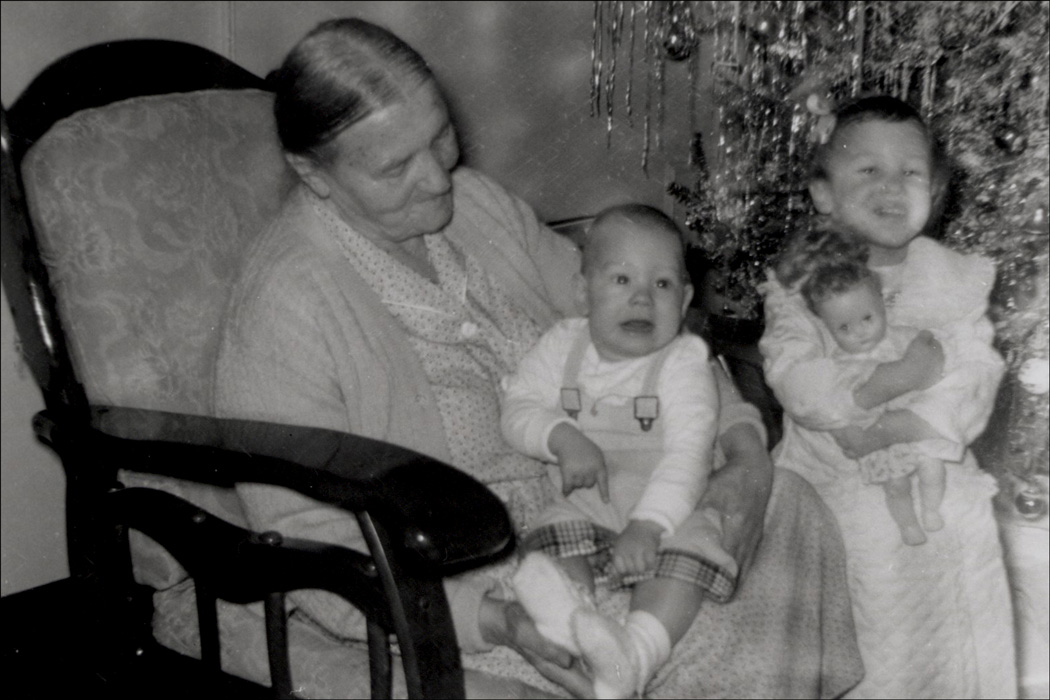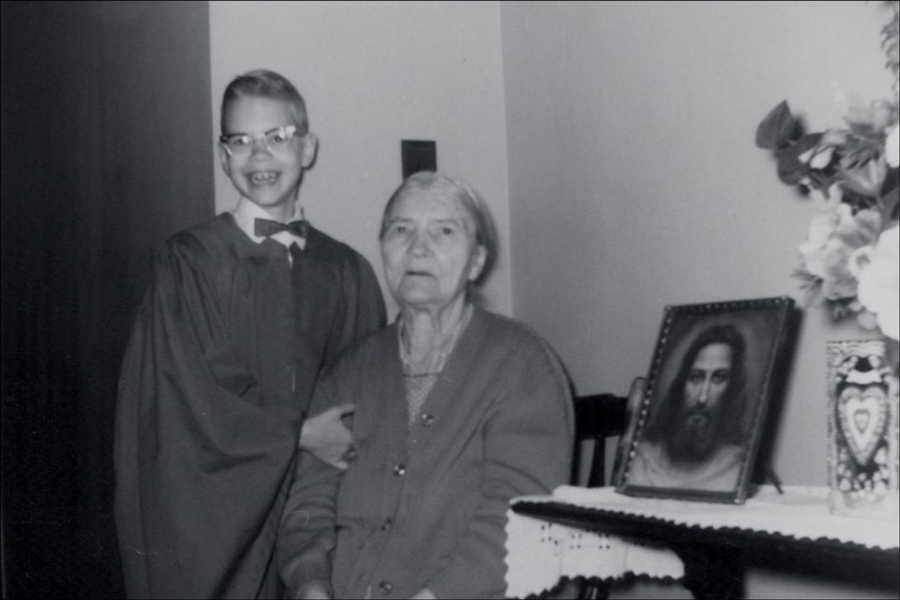I knew my grandmother for 14 years before her death in 1969, and even though I remember her well, I honestly can’t say that I knew her well . The problem was that my grandmother never learned to speak English.
My grandmother, Marianna Dańko, was born on 04 Febraury 1880 in Śliwnica, Bezirk Sanok, Kingdom of Galicia and Lodomeria, Austria-Hungary.  Although she was an Austrian citizen, she was ethnically Polish and, although Śliwnica was part of Austria-Hungary, it had been part of the Polish-Lithuanian Commonwealth before the first partition of Poland in 1772. Her maiden name at birth was Dziura, but while she was still in Poland the family changed the surname to Dziurzyński (the feminine form of this surname is Dziurzyńska).  She married my grandfather, Michael Dańko, on August 14, 1898 . I’m told that my grandparents met for the first time not long before their wedding . The wedding itself was probably held in Dubiecko, but I haven’t found a copy of their marriage record yet . After their marriage, my grandparents lived in my grandfather’s home village of Nienadowa . They had three children while they lived in Galicia, one of whom died there.
My grandfather immigrated to the United States in 1905 and left my grandmother and her children behind . My grandmother and the two surviving children immigrated in 1909, arriving at Ellis Island on May 24, 1909 . The family reunited in Worcester, Massachusetts, where my grandfather had secured lodging between the Rural Cemetery and the railroad tracks.
Grandfather worked as a wire straightener at the nearby American Steel and Wire Factory, and Grandmother kept house . My grandparents had eight more children, one of whom died of broncho pneumonia at the age of one . For a period of time, the family shared their house with as many as seven other Polish immigrants, and Grandmother’s brother, Jan Dziurzyński lived with the family for a while, as well.
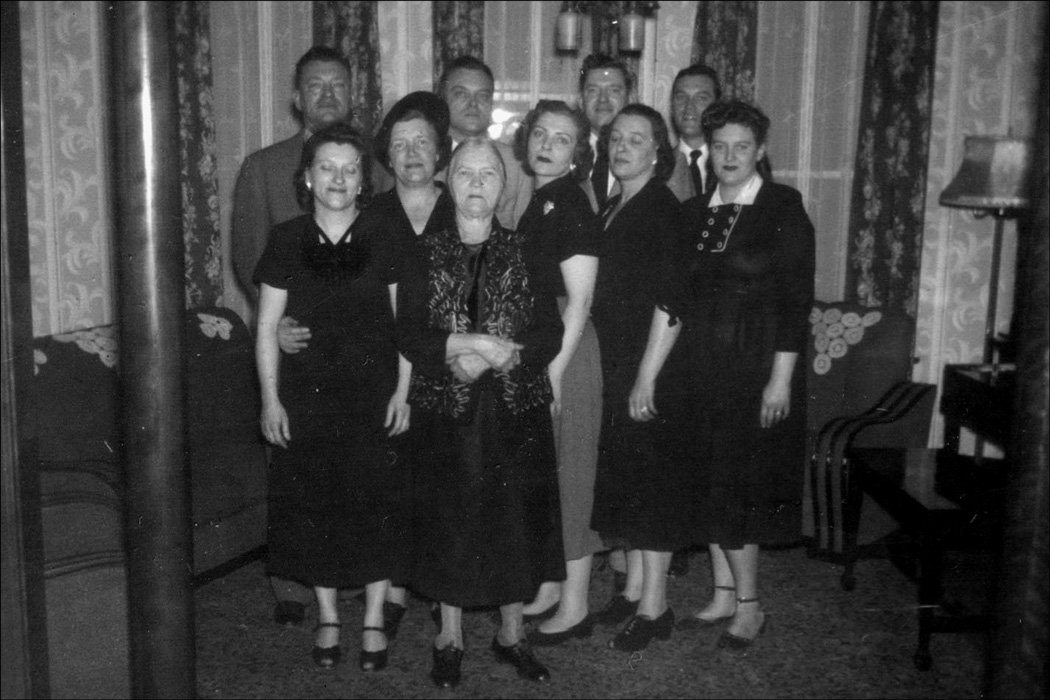
Marianna Danko and Her Children
On January 2, 1953, my grandfather died.
For many years after my grandfather’s death, my grandmother lived with my Aunt Helen on Colonie Street in Albany, New York . I remember their apartment well – it was low-income housing in Arbor Hill, one of the poorer sections of Albany.
The best memories I have of my grandmother were from the 1960s . On Sundays after church, my family would go to my grandmother’s apartment and spend the day with Grandmother, whom we called “Nanny Danko” . We celebrated birthdays and holidays with Nanny Danko, and my Aunt Helen would cook szynka (ham), kielbasa, pierogi, and ziemniaki (potatoes).
Birthdays, especially Nanny Danko’s birthdays, were some of the most festive occasions for us . Nanny loved to hear us sing “Happy Birthday”, and she loved to watch the lighted candles on the birthday cake, so much so that she refused to blow them out . She would just sit, watch the candles, and smile . Finally, when we couldn’t stand it any longer, my sisters and I would blow out the candles, and Nanny Danko loved to watch that, too.
Nanny never quite grasped the concept of television . She was convinced that, if she could see people on the television, they could see her, too . She absolutely loved to watch Mitch Miller’s program “Sing Along with Mitch” even though she couldn’t understand the words . Before she would watch Mitch Miller, she would get dressed in her best clothes, do her hair, and place her rocker squarely in front of the television so Mitch could have an unobstructed view of her . I think she may have been sweet on Mitch.
Many times when we visited, Nanny Danko would sit in a hard, wooden chair in a corner of the living room, next to a picture of the Sacred Heart of Jesus . Periodically, she would pick up the picture and kiss it . I suspect she may have been praying . My father told us that she kissed that picture so often, he was surprised she hadn’t worn the picture completely away . I sometimes wonder what became of that picture.
Nanny Danko had a special sweet spot for her sons and grandsons . Even though she could only speak a few words of English and I could only speak a few words of Polish, I remember spending time alone with her .  I remember she would run her fingers like a spider crawling up my arm and across the back of my neck .  I would laugh (after all, it tickled!) and she would smile.
Every now and then, just as we were leaving for the night, Nanny Danko would go to her bedroom and emerge with three crisp, new dollar bills, one for me and one for each of my sisters . For years my father couldn’t figure out where she got these brand new dollar bills until one day he caught her washing and ironing her paper money . She told him she hated dirty money!
For much of the time I knew her, Nanny Danko was not in the best of health . At one point, she slipped on the ice and broke either her leg or her hip (I don’t remember which) and she had to use a walker thereafter . Even though she saw a doctor for her ailments, she wouldn’t take her medication and preferred to flush the pills down the toilet . Even so, she lived to age 90.
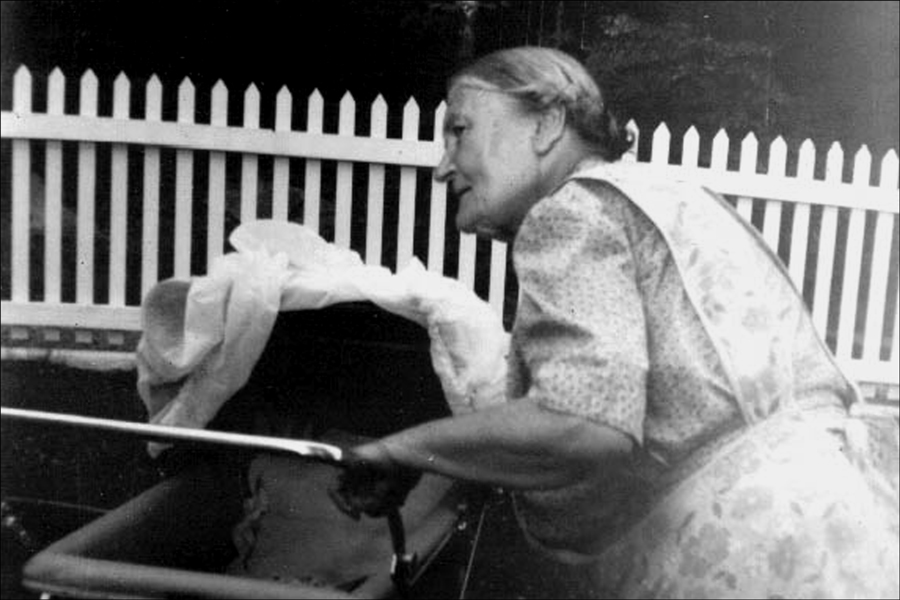
Nanny Danko (with Me in the Baby Carriage)
I remember that Nanny Danko was always kind and gentle with her grandchildren, but she was very strong willed and she made sure that her own children knew what was on her mind .  I seldom knew what she was talking about, since I couldn’t understand Polish well enough to follow the conversation . She called me Staś, the diminutive name for Stanisław (Stanley), but nobody ever corrected her . She was not well schooled, and she couldn’t read and write . Even her spoken language was not well refined; she tended to use Polish slang rather than the proper Polish words . I’m told that instead of the Polish word twarz (face) she used the word gęba (mug, kisser) . But, I guess she never needed a better education – she was a Polish farmer’s daughter who married young, had eleven children, and whose responsibilities were limited to raising the children.
Nanny Danko died on September 8, 1969, shortly after I started High School . I wasn’t allowed to go to the funeral in Worcester, and it wasn’t until years later that I was able to visit her grave . I think of her often, and fondly . Kocham ci, babciu!
Copyright © 2006 by Stephen J. Danko

